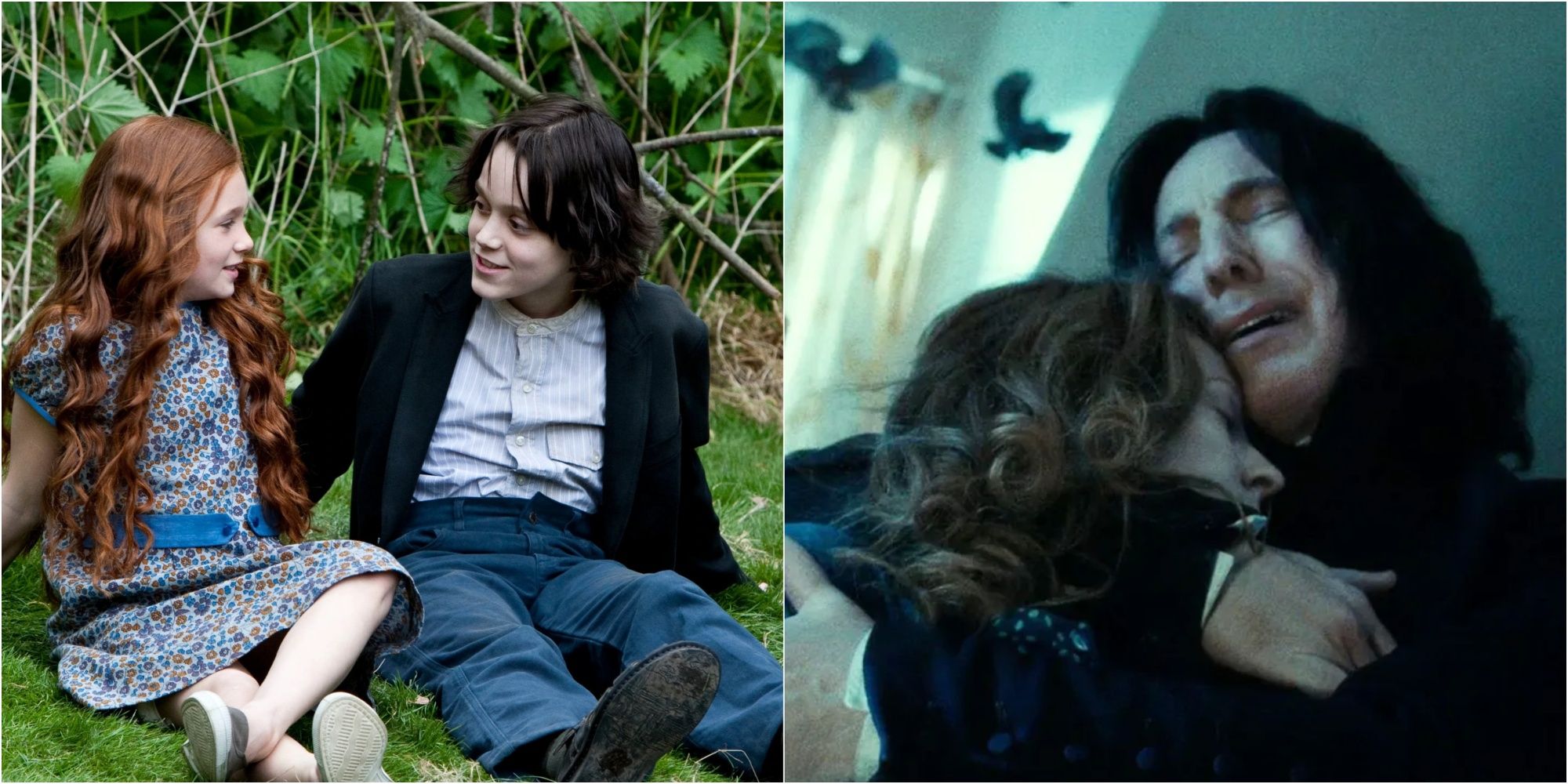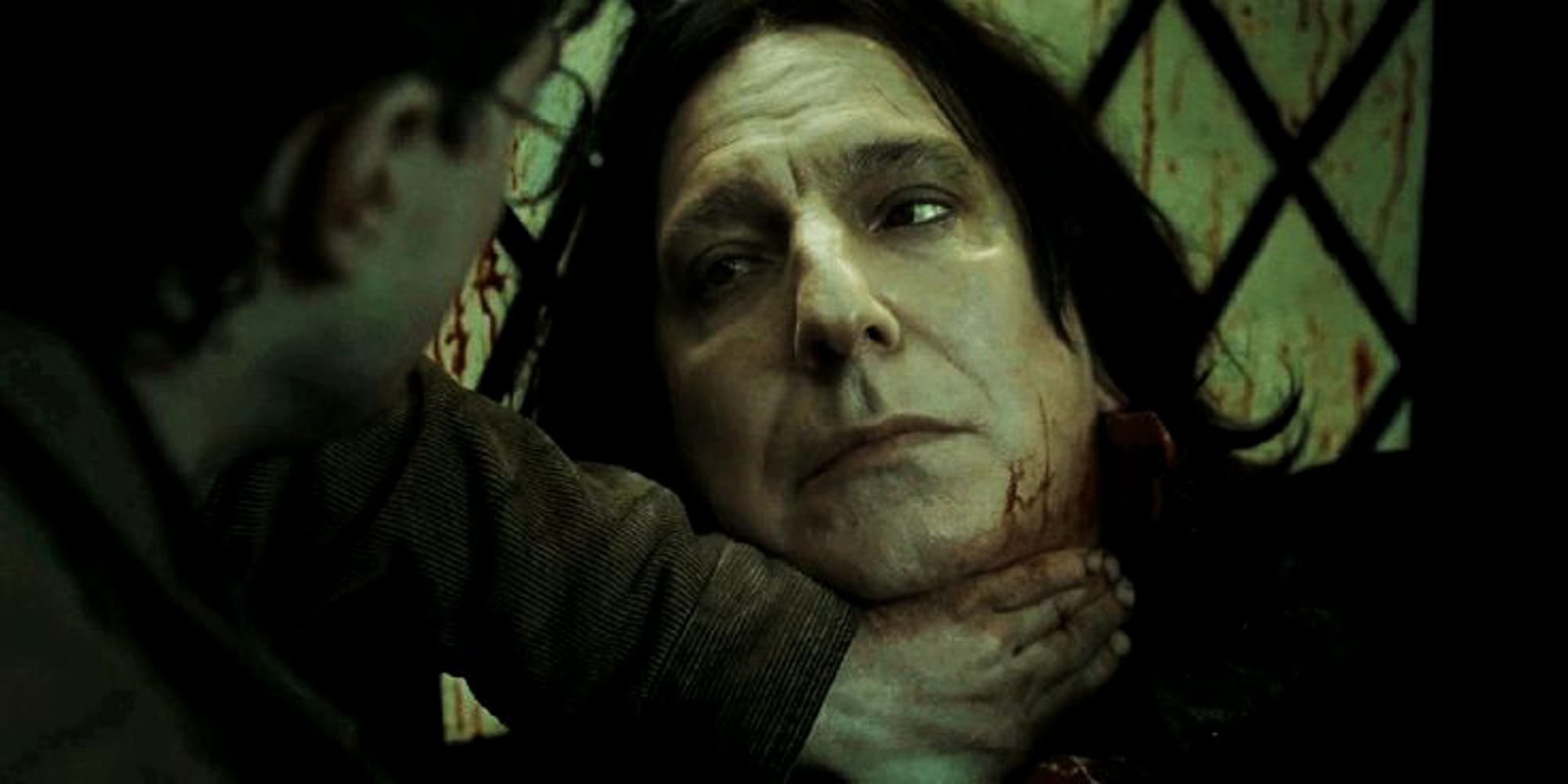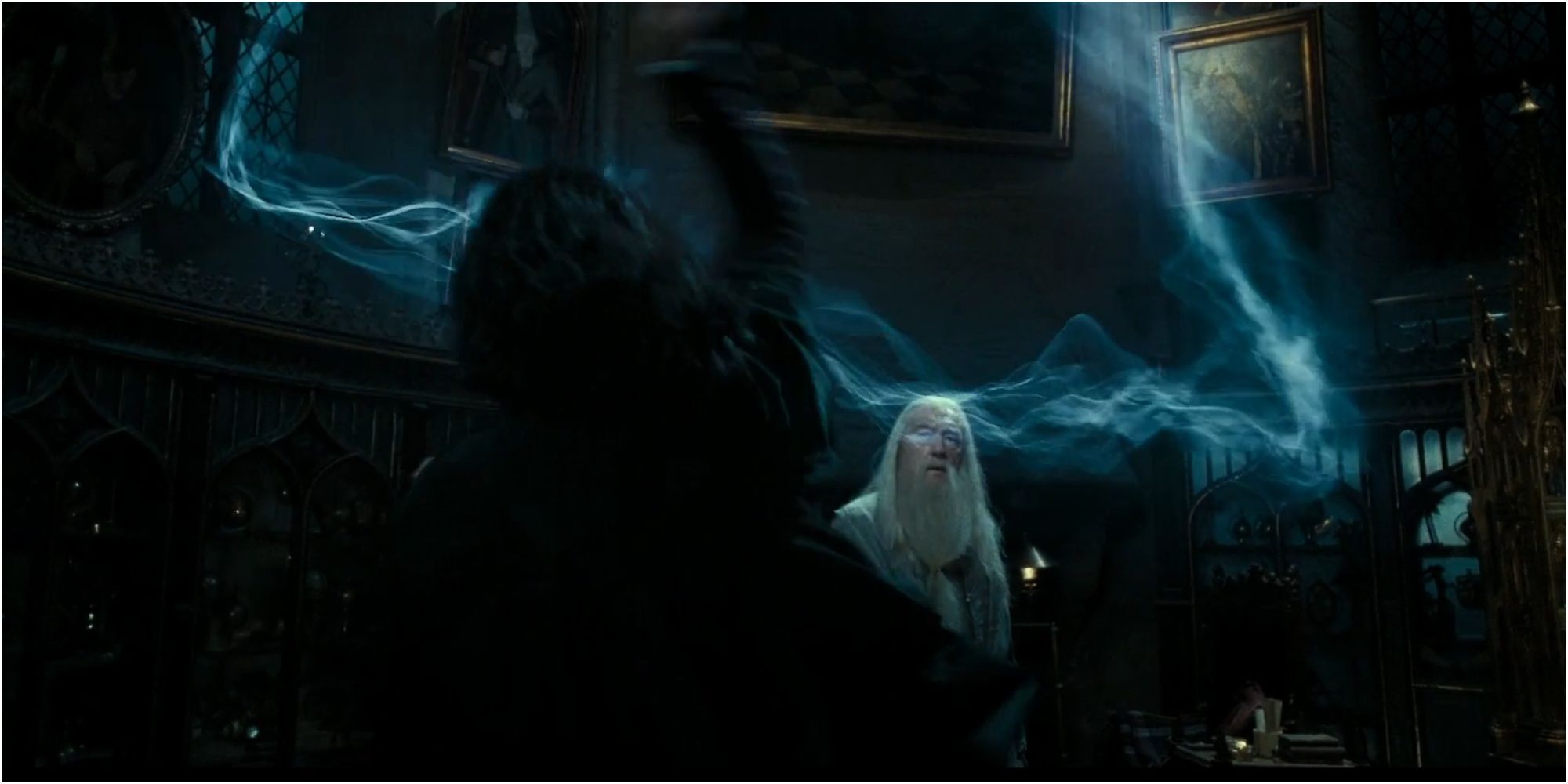Few characters in Harry Potter boast an arc as fascinating as that of Severus Snape. Introduced in the first Harry Potter movie as Hogwarts' Potions master, he seemed to lack sympathy for his students, especially Harry from the get-go. However, beneath Snape's hard exterior, lay memories of a troubled past, and the enduring guilt of losing the love of his life. His moral ambiguity and complex character development lent him an anti-hero appeal. He could adapt to obstacles, had superior intelligence, and most of all remained loyal to the good cause (Dumbledore's) until the very end.
The only child of a Muggle father named Tobias Snape and a witch mother, named Eileen, he lived on Spinner's End street, a poverty-stricken neighborhood of Cokeworth town. His home was close to Lily and Petunia Evans', and that's how he got to know and become friends with Lily. There's no denying that as a Hogwarts student, Snape was friends with evil Slytherins, Avery, and Mulciber, joined the ranks of Voldemort's Death Eaters, and relayed a part of Sybill Trelawney's The Chosen One prophecy to him. Though Snape changed allegiance, the question remains of who and what drove his actions and why did he stay on the good side until he breathed his last.
Snape's Everlasting Love For Lily
Severus Snape epitomizes a tough-on-the-outside-but-soft-inside persona. Chapter 33 of Harry Potter and the Deathly Hallows "The Prince's Tale" is a fascinating insight into Snape's life. Towards the end of the previous chapter, "The Elder Wand," Voldemort commanded his pet snake, Nagini to kill Snape, as he wrongly assumed Snape was the master of the Elder Wand. "While you live, Severus, the Elder Wand cannot truly be mine," said Voldemort shortly before Nagini pierced her fangs into Snape's neck. Once the Dark Lord left the shack, Harry approached a badly wounded Snape. As he looked down upon the man he hated, Snape grabbed him and told him to take the "Silvery blue, neither gas nor liquid" substance that fell from his eyes. A flask appeared out of thin air, Harry collected the silvery substance into it and the next thing he knew, Snape was gone.
In Chapter 33 of Harry Potter and the Deathly Hallows, Harry walked into the Headmaster's office and poured Snape's memories into the basin of the Pensieve, and dived in. In a nearly deserted playground, a skinny boy with black hair and shabby clothes (young Snape) watched the younger of two girls from behind the bushes. She was named Lily and the older one was named Petunia. He saw Snape was the first person to tell Lily she was a witch, and pretty much the beginning, and the end of their friendship. As the scenes re-formed, Harry saw Lily and Snape boarding the Hogwarts Express at Platform 9 and 3/4, their Sorting Ceremony, James Potter, and his friends, and most of all, the final altercation between Lily and Snape.
While Snape's fascination with the Dark Magic caused rifts in their friendship, his calling her "Mudblood" brought about its end. Though Snape apologized, Lily confronted him for being a Death Eater, a claim he wouldn't deny. Harry saw Snape deeply regret relaying Sybill Trelawney's prophecy to the Dark Lord, and request Dumbledore to take the Potters into hiding in exchange for "Anything" in return. Next, Harry also saw Snape heartbroken following the death of Lily, and Dumbledore inform him that her boy, Harry survived the attack. While Snape wished he were dead, Dumbledore spoke about the way forward. Since Dumbledore was certain the Dark Lord was going to return, he enlisted Snape's help in protecting Lily and James Potter's boy.
Snape Creates His Patronus
As the scenes dissolved and reformed, Harry learned more and more about Snape's life and times. Snape defected from the Death Eaters purely out of his love for Lily. He learned the truth behind Dumbledore's death, and most of all, he found out that on the night of the attack at Godric's Hollow, Voldemort used Avada Kedavra on Harry and unintentionally created a seventh Horcrux. The Killing Curse had rebounded upon the Dark Lord, and a fragment of his soul latched itself onto Harry after Lily cast her own life as a shield between them. "And while that fragment of soul, unmissed by Voldemort, remains attached to and protected by Harry, Lord Voldemort cannot die," said Dumbledore in Harry Potter and the Deathly Hallows. This had sealed Harry's fate, and it meant that his death would truly mean the end of Voldemort. Snape understood that Dumbledore's ultimate goal was to take down Voldemort, no matter the cost. When Dumbledore confirmed that Harry must die at the hands of Voldemort, shocked, Snape accused him of raising Lily's boy "like a pig for slaughter."
Touched, Dumbledore asked Snape if he'd started to care for Harry after all, and as a response, the latter cast a silver doe (female deer) from the tip of his wand. "Expecto Patronum!" said Snape as a silver doe appeared in the office and went out the window (seen in the last Harry Potter movie). As Dumbledore watched the doe fly away, he turned towards Snape, to confirm the obvious. "Lily! After all this time?" he asked and "Always," replied Snape. Snape having the same Patronus, the doe, as Lily symbolized his everlasting love and unwavering devotion towards her. He hadn't stopped loving her after their last altercation, marriage to James Potter, or death. She was his "always," his guiding light, and he protected Harry for her.



